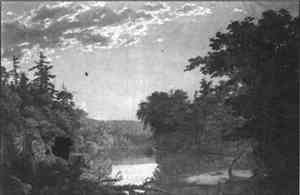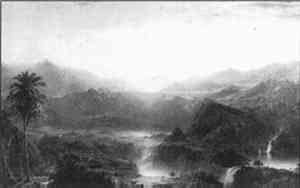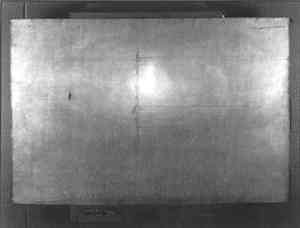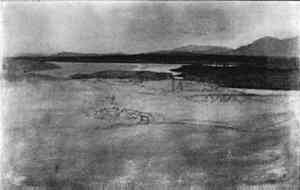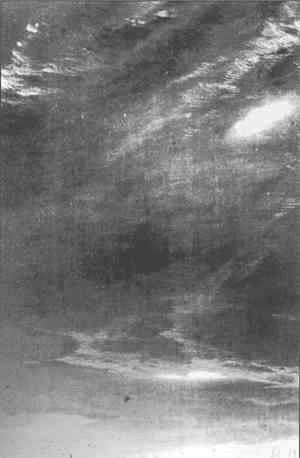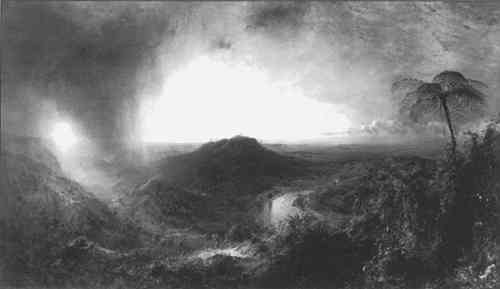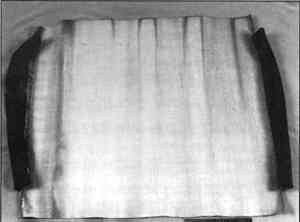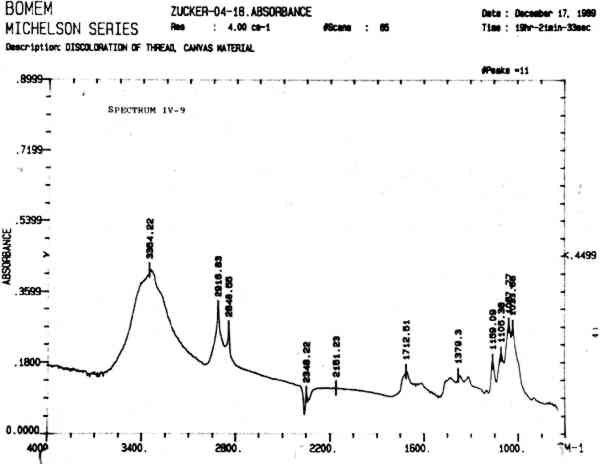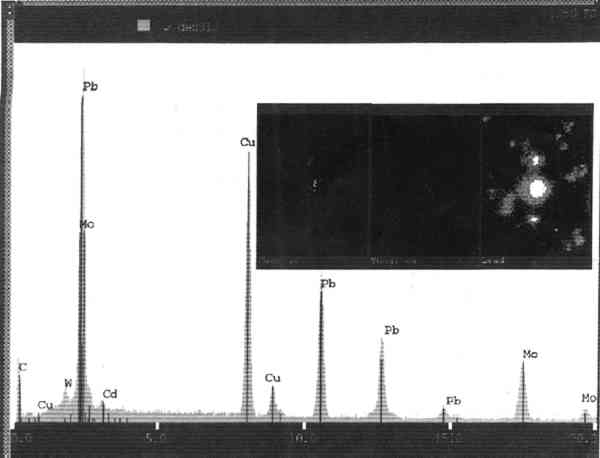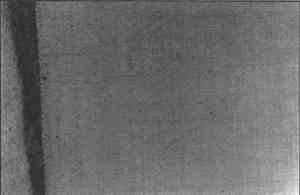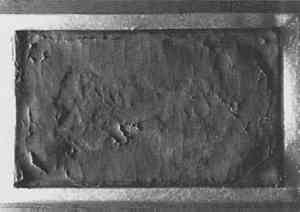FROM THE GROUND UP: THE GROUND IN 19TH-CENTURY AMERICAN PICTURESJOYCE ZUCKER
ABSTRACT—A painting is built from the ground up. The materials and color of the ground have a significant impact on the stability, tonality, and quality of the finished work of art. For 19th-century American artists of the Hudson River School, who became students of light and translucent media, the color and properties of the ground were critically important. To achieve certain visual effects, highly absorbent, highly water-soluble grounds were commonly used. During this time artists' colormen were experimenting with various recipes to produce economical grounded canvas that could be stored and rolled. Experimentation precipitated problems with faulty ground layers. The paintings of Frederic Edwin Church (1826–1900) are used to document changes in the use of ground color and to describe ground staining. With ground staining and its associate bloom prevalent in American paintings of the 19th century, the importance of recognizing these conditions is noted. Preliminary analysis and possible mechanisms for ground staining are discussed as well as problems with water-soluble grounds and shrinkers. TITRE—La couche pr�paratoire dans les tableaux am�ricains du XIXe si�cle. R�SUM�—Un tableau se fait en commenc�ant par la couche pr�paratoire. La couleur de la couche et les mat�riaux dont elle se compose ont un tr�s grand impact sur la stabilit�, la tonalit� et la qualit� de l'œuvre finale. Au XIXe si�cle, pour les artistes am�ricains de l'�cole de l'Hudson River qui �tudiaient la lumi�re et les liants translucides, la couleur et les propri�t�s de la couche pr�paratoire �taient particuli�rement importantes. Pour obtenir certains effets visuels, des couches pr�paratoires extr�mement absorbantes et solubles � l'eau �taient souvent utilis�es. Durant cette p�riode, les marchands de couleur pour les artistes invent�rent diff�rentes recettes pour produire des toiles pr�par�es bon march� qui pouvaient �tre roul�es sur elle-m�mes et mises de c�t�. Ces exp�riences ont parfois eu comme r�sultat des couches pr�paratoires d�fectueuses. L'auteur utilise les tableaux de Frederic Edwin Church (1826–1900) pour illustrer l'�volution des couleurs des couches pr�paratoires et pour d�crire les taches pr�sentes dans ces couches. Il est important de reconna�tre ces conditions, car ces taches et le bleuissement qui y est souvent associ� sont des ph�nom�nes fr�quemment rencontr�s dans les tableaux am�rica�ns du XIXe si�cle. Les analyses pr�liminaires et les m�canismes qui semblent expliquer la pr�sence de ces taches sont discut�s. Les probl�mes caus�s par les couches pr�paratoires solubles dans l'eau et par les toiles pr�nes au r�tr�cissement sont aussi abord�s. TITULO—Desde los cimientos: la capa de preparaci�n en las pinturas americanas del siglo XIX. RESUMEN—Una pintura se construye desde sus cimientos. Los materiales y el color de la capa de preparaci�n tienen un impacto significativo sobre la estabilidad, tonalidad y calidad de la obra de arte terminada. Para los artistas americanos del siglo XIX de la escuela del r�o Hudson, quienes se convirtieron es estudiosos de la luz y del medio transl�cido, el color y las propiedades de la capa de preparaci�n eran de importancia trascendental. Para lograr ciertos efectos visuales, eran usadas frecuentemente capas de preparaci�n altamente absorbentes y muy solubles en agua. Durante esta �poca los 1 INTRODUCTIONBetween the teachings of the academies in Europe and the development of impressionism, American artists of the Hudson River School painted the beautiful, the picturesque, and the sublime. These artists were students of light (Huntington 1966), paintaing the “evanescent colors of dawn and sunset, the dramatic clear light of midday and the warm haze of Indian summer afternoons” (Stebbins 1983, 79), observing effects of atmosphere and the articulation of light. A painting that captures light is built from the ground up. The materials of the ground and the color of the ground both have a significant impact on the stability and tonality of the finished work of art. The dynamics of the ground influence the absorbency, permanence, and, ultimately, the quality of painting, light, and luminosity. This paper provides an overview of the use of grounds in 19th-century painting and uses the work of Frederic Edwin Church (1826–1900) to demonstrate the extent of change and the nature of some problems encountered with grounds in 19th-century American paintings. The materials of the ground have been identified by the use of the polarizing microscope or analytical transmission electron microscope and/or by analysis with Fourier transform infrared spectroscopy. The 19th-century marked a turning point for artists. No longer did they have to prepare their own canvases and grind their own paints, for as the century progressed, art supplies were more readily available from artists' colormen. Many artists' colormen had businesses in lower Manhattan near the Tenth Street Studio Building where Church, Albert Bierstadt (1830–1902), Sanford Gifford (1823–80), and many other artists shared both common space and a camaraderie in following a common pursuit. These artists were in and out of each other's studios, often viewing works in progress and learning techniques from one another. They purchased art supplies from the same group of vendors (Blaugrund 1987). At this time, a growing number of new, synthetic, relatively untried products were appearing on the market. Unfortunately, many products were adulterated, especially materials coming from England (Kemp 1990), causing the stability of artists' materials to be a matter of great concern. Manuals and handbooks of the period (Merim�e 1830; Bouvier 1844; Ridner 1850; Field 1869) provided advice on durability and tips on how to achieve translucency and brilliant color to maximize the potential for carrying light (Ridner 1850). In an effort to capture light and ensure permanence, the artists used translucent materials. Colormen used resins and vehicle modifiers (Carlyle 1990) to improve the working properties of the materials. In addition, they experimented with nearly every aspect of painting technique. Modifying recipes to achieve certain effects began with the ground layer. The colormen needed to provide a supple grounding for canvas that could be stored and rolled for long periods without apparent damage. The artists 1.1 THE IMPORTANCE OF THE GROUNDMax Doerner, an authority on painting materials, explains that the ground “has an extraordinary influence on the durability of the picture and the action of the colors.” He notes that a ground “makes the canvas more impenetrable and less porous and at the same time heightens the brilliance of the colors by means of a luminous ground” (Doerner 1984, 8–9). He goes on to say:
The great variety of grounds (i.e., oil, chalk, half-chalk) and their recipes have been discussed elsewhere (Hendy and Lucas 1968, 266–76) and are not addressed in this article. The ground not only provides a texture of the artist's choice and a level of absorbency and color but also serves as the structural layer between the fabric support and the paint. “The use of absorbent, semi-absorbent or non-absorbent grounds and the question of how to achieve the desired state of controlled absorption” (Hendy and Lucas 1968, 271) have much to do with the technical problems encountered in 19th-century American painting. In addition:
Balancing the right proportion of additives is extremely difficult. Therefore, it is not at all surprising that a variety of problems arose with commercially prepared canvas. In a letter to Asher B. Durand (1796–1886) dated May 24, 1836, Thomas Cole (1801–48) expressed his concern with proper primings:
Period treatises provide additional insight into the difficulties encountered by artists' colormen. Merim�e explained that “originally canvases were prepared like panels with distemper grounds.” He continued: “Size made of glove parings is laid on with a palette knife or trowel. When the size is dry, it is rubbed with a pumice stone. Then with a knife lead-white is laid on and pumiced. A second or third is also applied” (Merim�e 1839, 218). Merim�e noted that cloth prepared in this way required two or three months to dry in summer and five or six in winter. He also advised (220):
It was imperative that colormen find a proper grounding that would take less than six months to dry. Although Merim�e's suggested method offered an alternative shortcut procedure that added versatility, his system might have led to the kind of oil-stained canvas described by Thomas Cole. Experimentation continued, and the recipes and products produced varied in quality and type. While not a member of the Hudson River School, at the time the 1839 translation of Merim�e appears, the American artist John Vanderlyn (1775–1852) used what can be called an experimental canvas for his grid sketch of The Landing of Columbus, 1839. The canvas stencil (fig. 1) shows that this fabric was prepared by Valle and Bourniche. These Parisian artists' colormen had applied for a patent application in 1839 for primed linen canvas that would not react to changes in relative humidity. According to the patent, located with the help of the French Government Patent Office, the “active” ingredient was natural rubber (Valle and Bourniche 1839). They suggested that paintings that were to be hung on damp church walls be executed on this canvas for the achievement of long-term preservation. This example reveals the kind of experimentation being carried out by canvas preparers in an effort to develop a flexible, stable, primed canvas to meet increasing demand.
During such a period of change and experimentation, problems originating from the ground layer should come as no surprise. It is also likely that a variety of recipes for canvas preparation were being used and tested by the New York City artists' colormen and others. A basic recipe follows: “The canvas is first treated with size or a solution of glue….The priming consists of two coats, the first containing whitening and size, the second lead white and linseed oil” (Church 1915, 34–35). This recipe represents the most commonly encountered commercially prepared ground structure in 19th-century American paintings. Although ingredients used in the various layers change, invariably most recipes called for added drier in the upper layers to speed the drying time (Hubbard 1795; Hubbard 1939; Arteni and Posada 1984). It is interesting to note that a mid-century manual—a translation and compilation of European sources by the American artist, Laughton Osborn (1809–78)—asserted that canvas was universally used for pictures in oil. Evidently it was kept pre-primed in rolls of various widths at the colormen's shops. With short notice the canvas could be cut and stretched to any ordered size. Standard sizes were available off the shelf. The manual's writer urges that this ready-made canvas be 1.2 GROUND COLOROsborn was also specific about the color of the ground: “As to the tint given to this preparation, it is better that it should be light. Of the three kinds that are found in the shops, light grey, pink and the faintest flesh color, this last is the best” (Osborn 1845, 271). For landscapes, the specific recommendation for ground color is a warm and somewhat golden orange tint. If, however, the priming is grayish white, then a wash of a warm orange color is to be applied—brighter for the lights, darker for the darks. The gayest and brightest tone is selected for skies and distances (Osborn 1845). The fact that the warm colors will show through the upper layers of paint, enriching and harmonizing the colors on the surface is clearly understood. Bouvier (1844), in his influential treatise, recommended what he considered the best method for priming oil canvases. This method includes the use of a good, clear, rectified nut oil with lead-white of Holland, yellow ochre, and a little red ochre. He believed this method was “resplendent in light, not cold. It gives a harmonious warmth” (Bouvier 1844, 533). He did not ignore the use of pure red ochre grounds by the Old Masters but cautioned that pictures painted on this type of ground become suffused with brown in a relatively short time. In both Scene on Catskill Creek (1845) (fig. 2) and The Charter Oak (1847, Olana State Historic Site), Frederic Church used a technique similar to that of many contemporaneous artists. He worked on a white absorbent ground washed over with a warm imprimatura. Ground and pigment samples were mounted in Aroclor 5442 1.660 for optical analysis. Optical properties of the pigments were observed by polarized light microscopy (Zucker 1987). The layer directly against the fabric appeared to be primarily chalk (calcium carbonate) with a thinner layer of lead-white on top. In 1845, directly influenced by his teacher Thomas Cole, Church used the methods recommended by the influential treatises. Indeed, Cole's methods of preparing studies, sketches, and oil sketches prior to completing the finished painting are typical of European academic training (Boime 1986). In Scene on Catskill Creek, the imprimatura color changes from a light buff to a deep terracotta as we move from sky to foreground with four noticeable tonal changes. Using the Munsell Color System (Munsell 1976) to identify visual color and the Universal Color Language (Kelly and Judd 1976) to identify color names, the Munsell numbers and color nomenclature for the colors of
Huntington (1966, 63) observed that by the 1850s Church had abandoned Cole's “salmon buff” ground in favor of a thinly spread cream white ground. It has been suggested that Church's knowledge of Turner's use of white grounds may have motivated this change in technique. Church had John Ruskin's Modern Painters, which introduces the reader to Turner's methodology, on the bookshelves at Olana, his home. By the time, Church painted The Andes of Equador (1855) (fig. 3), he was using a two-layer ground, but the upper layer of lead-white contains a small quantity of bone black and raw umber to counteract the natural yellowing tendencies of lead-white in linseed oil. Church added zinc white at the sun to ensure a brighter white at this most radiant spot on the canvas. These pigments were identified from an unfinished canvas found in the archive at Olana State Historic Site (Zucker 1988)(fig. 4). The basic outline drawing had been laid in with chalk over the ground. This unfinished canvas appears to be the precursor for The Andes of Equador. The large-scale painting of The Icebergs (1861, Dallas Museum of Art) shows a two-layer white ground with a translucent blue-gray imprimatura and various translucent layers above (Thomas 1980). In Church's The Afterglow (1867) (fig. 5), the double-layer calcium carbonate and lead-white ground is found on both sides of the canvas (Zucker and Newton 1994). Church may have seen the double-sided ground as a measure to ensure permanence.
Unpublished conservation examination and treatment records were reviewed from the New York State Bureau of Historic Sites, Perry Huston and Associates, and the Cleveland Museum of Art to determine the components of the structure and grounds in Church's oeuvre. The thick, translucent, blue-gray imprimatura found on The Afterglow was used to carry and radiate light (fig. 6).
In Church's move to lighter colored grounds, he attempted to capture the brightness and luminosity of the white ground. The interposed translucent layers served to reflect and refract the light. Many other Hudson River School painters varied the color and type of ground. Ross Merrill, Jim Wright, Dare Hartwell, and Helen Mar Parkin reported in conversations with the author that Albert Bierstadt (1830–1902) used commercially primed linen canvas with primarily lead-white grounds (Hartwell and Parkin 1999). Later in his career, however, Bierstadt used a thin graphite ground on The Last of the Buffalo (1888, Buffalo Bill Historical Center) and (Hartwell and Parkin 1999). It is difficult to determine whether Bierstadt was interested in the preservative properties of graphite (it was said to impart waterproofing qualities) or in the ability of its silvery gray tone to produce the optical effect of the old masters (Doerner 1984, 30). In either case, graphite grounds had poor qualities as a substrate and produced poor adhesion with the layers above. J. F. Kensett (1818–72), another painter of the Hudson River School, also used commercially A period description of the working methods of Sandford Gifford (1823–80) reveals him working in a manner similar to Frederic
2 SOME PROBLEMS ENCOUNTERED IN 19TH-CENTURY GROUNDSIn February 1885, Frederic Church responded to a notice from the Corcoran Gallery of Art, Washington, D.C., that his great Niagara (1857) (fig. 8) had vertical streaks through the sky and the water. He replied that the “obnoxious” streaks were due to the canvas maker Winsor and Newton. He attributed the streaks to the use of sugar of lead–that is, lead acetate drier–in the canvas preparation to hasten the drying process. Church explained that the only pictures to develop this problem were those painted on Winsor and Newton Roman canvas. He recounts that it often took years for the streaks to work themselves through to the surface and that many years before he had carefully repainted the sky of Niagara to cover streaks. Church (1885) recommended that a restorer from New York, Mr. Oliver, undertake the repairs. It is likely that Church purchased the fabric in question from William Schaus on lower Broadway. According to an invoice in the archive at Olana State Historic Site, Church purchased Winsor and Newton Roman canvas from Schaus in 1860, the year he painted Twilight in the Wilderness(fig. 9), another picture with severe ground staining. In 1857, Schaus is listed in the New York City directory as “importer of the best English canvas, …purchasers can always rely to find here the very best articles from the most celebrated London and Paris manufacturers” (quoted in Katlan 1987, 220).
2.1 GROUND STAININGGround staining is a phenomenon peculiar to many paintings by artists of the Hudson River School. This is not to say, however, that it is limited to these artists. Ground staining is evident in the work of Church, Bierstadt, Heade, Kensett, Gifford, Cole, and others. As Church
One conservator looking at stains in Kensett's work described “slight discoloration occurring in patterns resembling wide brush strokes but seems to be coming from a layer under the paint.” She suggested that Kensett's experimentation with colored or toned primings might have accounted for some of the problems in his late work. Another factor might have been the modification of his usual paint mixture to “achieve greater freedom and fluidity of brushwork” (Dwyer 1985, 177–78). She finds that the most disfiguring and least explicable alteration occurs in Salt Meadow in October (1873; Metropolitan Museum of Art).
Church identified the cause of the ground staining to be the inclusion of lead acetate in the ground layer. He explained that an artists' colorman of his acquaintance who made grounds with lead acetate had this staining problem develop. Church owned more than a dozen texts on chemistry, including Field's Chromatography. Field (1869, 52) warned: “The inexperienced ought here to be guarded against the highly improper practice of some artists, who strew their pictures, while wet, with acetate of lead; which though it may promote present drying, will ultimately effloresce on the surface of the work and throw off the color in sandy spots.” What Field called efflorescence leads us to the problem of bloom. In general, this phenomenon–the appearance of a white or bluish white opaque or semi-opaque film on the surface of an oil painting–is prevalent throughout Church's work. It is most visible in the hundreds of architectural sketches in the archive at Olana State Historic Site (fig. 12). On these sketches, bloom appears as a bluish white hazy film that seems to be waxy in nature. Similar bloom has been identified on other pictures as lead stearate (Williams 1988). On Church's architectural sketches and on other oil-on-paper works, there is extensive bloom, yet there is no ground staining (fig. 13). This phenomenon suggests the possibility that the size and/or fabric support together with the materials of the ground may contain the combination of factors producing ground staining. The architectural sketches were executed quickly. No doubt Church wished them to dry quickly and so would add extra drier. It is quite possible that the drier enhanced the formation of bloom and staining. Based on bills in the Olana archive we know that Church ordered large quantities of a drier called sicatif de Courtrai from Goupil & Co.
2.2 ANALYSISAnother fortuitous find in the Olana archive sheds additional light on this subject. An unused, rolled piece of primed linen was identified during a site survey (fig. 14), measuring 78.5 cm from selvage to selvage, 74 cm long with a plain tabby weave having 18 warp and weft threads per cm.
Polarizing microscopy showed that the linen was coated with a layer of calcium carbonate with a very thin layer of lead-white on top. It appeared that either an oily coating had been applied overall or that there was excess oil in the top layer of lead-white. The selvage on one side appeared to be saturated with oil. Oil had penetrated to the reverse irregularly. Stains on the front did not correspond to areas where oil has penetrated to the reverse. Fourier transform infrared spectroscopy analysis of a sample from this canvas was undertaken. Unfortunately the analysis was inconclusive in identifying the materials in the size layer of the canvas. Significant amounts of long chain C18 alkyl compound, categorized as most likely a C18 carboxylic acid salt were identified (fig. 15). The analyst suggested that the C18 alkyl compound was the reaction product of the C18 alkyl moiety in dried linseed oil with an inorganic metal (Miaw 1989). A possible source for the metal is a lead drier such as lead acetate or the lead-white pigment. Lead was confirmed as the primary metallic component in the bloom material using an analytical
2.3 POSSIBLE MECHANISMThe white material or bloom proved to be a carboxylic acid salt, most likely lead stearate. Christopher Tahk, director of the Art Conservation Department, Buffalo State College, New York, in a private conversation, offered several suggestions as to a possible mechanism for the formation of bloom and ground staining. Lead from the lead-white paint film and/or the lead acetate drier could react with any carboxylic acids in the linseed oil paint to form the lead salt, lead stearate. The lead drier in the presence of humidity cycling would enhance the formation of bloom. The oil staining is also likely a product of the production of lead stearate. The lead-white paint film may be partially converted to lead stearate, which has a lower refractive index. On a prominent thread, where the paint film is thin, the paint becomes nearly transparent (fig. 17). Thus the uppermost threads of the dark, oil-saturated fabric may become visible or partially visible.
Why is the ground staining selective, and why is it found primarily along vertical threads? One possible explanation is related to the preparation of linen for weaving. Warp threads were prepared with adhesives, usually starch or gum; softeners, such as tallow, palm oil, soap, paraffin or resin; or deliquescents, such as magnesium chloride, antiseptics, and weighting agents. The warp threads were treated selectively to lessen abrasion of the fibers and to increase the strength of the fibers during the weaving process (Woodhouse and Milne 1914). Chemical interactions between soaps and metal ions may in part account for the selectivity of ground staining. More research is necessary to examine this problem. 3 WATER-SOLUBLE GROUNDSChurch's 1847 painting Christian on the Borders of the Valley of the Shadow of Death(fig. 18) has suffered much due to the water-soluble nature of its ground. The picture was subjected to a double Elmer's Glue lining in 1965. Its removal and subsequent wax relining did not solve the structural problems, for the ground literally dissolves when water is applied to its surface. The application of a water-based lining adhesive compromised the structure even further. The minimal amount of water that seeped through the back of the fabric was enough to cause additional breakup of the ground. There was a lack of adhesion between paint and ground and between ground and canvas. The paint sat like corn flake crumbs over large areas of the surface. During the removal of the Elmer's Glue lining in the 1980s, a Theodore Kelley canvas stencil was found on the reverse and noted in the conservator's report. In the year Church painted Christian, Theodore Kelley was located on Wooster Street in lower Manhattan (Katlan 1987). His primings are notorious for their water-soluble nature. The painting was recently re-treated using local consolidation.
Artists who used absorbent grounds like the calcium carbonate–animal glue combination found in Theodore Kelley canvases may well have been seeking a bright, fresco-like appearance. Unfortunately, the chalk ground is highly susceptible to the action of water. When Church's oil sketch for The Icebergs was subjected to harsh treatment, including the use of water-based adhesive in the 1960s, the result was severe cleavage between ground and canvas and between paint and ground (fig. 19). The restorer felt compelled to extensively overpaint the accompanying loss.
While the two previous examples come from the works of Church, many other artists were interested in achieving the light, bright appearance possible with absorbent grounds. Many of them also purchased supplies from Theodore Kelley, including Durand and Gifford (Katlan 1987). In the past, paintings with water-soluble grounds were often infused with wax before cleaning was undertaken. There is a need to look for alternative methods for treating these precarious structures. Before treating 19th-century American paintings, it is critical to know the structure well. Not only the resinous components in the layered structure, but also the ground can become solublized. Chalk grounds or partial chalk grounds are also implicated when we see severe shrinkage and loss in a painting (fig. 20). Note the tendency of this painting to shrink in areas exposed to water. A high percentage of calcium carbonate and animal glue is often found in the ground layers of pictures that have a tendency to shrink. Hedley had conducted research on “shrinkers,” according to Carlyle (1990). Carlyle noted that Hedley's preliminary findings suggested that power-loomed fabrics were implicated.
4 SUMMARYThe materials and the color of the ground have a significant impact on the stability, tonality, and quality of the finished work of art. For the 19th-century American artists who became students of light and translucent media, the color of the ground became even more critical. Experimentation in the 19th century by artists' colormen precipitated problems with faulty ground layers. Changing recipes led to the use of primed canvases that developed unsightly stains, which eventually disfigured the paint film. To achieve certain visual effects, highly absorbent, highly water-soluble grounds were commonly used. Because these grounds are hidden by the layers above, the potential for disaster is latent. In treating 19th-century American pictures, there is a need to think about the varnish, the glazes, the upper paint films, the resinous interlayers, and, certainly not least of all, the ground. Methods of approach must include testing for hidden components. Care must be taken to determine whether one is looking at broken scumbles or the vestiges of bloom that have migrated through the structure to be deposited on the surface, making the artist's original intent difficult to decipher. Hazy, atmospheric effects are part of the vocabulary of many of these pictures. Many of the painters of the Hudson River School purchased materials from a group of vendors near the Tenth Street Studio Building. At the same time that colormen were experimenting with ground recipes, the artists were modifying European techniques to produce the American idea of landscape and American light. Grounds were changed in color and type based on aesthetic needs and permanence. Ground staining and water-soluble grounds were not unique to any particular artist of the period. They did, however, mark paintings and produce problems and challenges. Understanding the milieu and the materials and structure will help art historians, conservators, curators, and conservation scientists to meet the challenges of treating these pictures. ACKNOWLEDGEMENTSThis article would not have been written without the encouragement of Ross Merrill. I am also deeply indebted to Steve Kornhauser, Sandra Webber, Marcia Steele, and Rita Albertson for providing visual examples of ground staining. Invaluable advice was offered by Christopher Tahk, Nathan Stolow, Dare Hartwell, Deborah Trupin, Jim Wright, Leslie Carlyle, and Audrey Nieson. REFERENCESArteni, S. C., and M. S., Posada. 1984. The secrets of the masters: Historical controversies and hypotheses. ICOM Committee for conservation preprints, 7th Triennial Meeting, Copenhagen. Paris: ICOM. 1:84.11.12. Blaugrund, A. 1987. The Tenth Street Studio Building. Ph.D. diss., Columbia University. Boime, A.1986. The academy and French painting in the nineteenth century. New Haven and London: Yale University Press. 22–43. Bouvier, P. L.1844. Manuel des jeunes artistes et amateurs en peinture. 3d ed.Strasbourg: Ve Berger-Levrault. Carlyle, L.1990. British nineteenth-century oil painting instruction books: A survey of their recommendations for vehicles, varnishes, and methods of paint application. In Cleanings, retouchings and coatings, ed.J. S.Mills and P.Smith. London: International Institute for Conservation of Historic and Artistic Works, 76–80. Church, A.1915. The chemistry of paints and painting. London: Seely, Service & Co. Ltd. Church, F. E.1885. Letter to the curator of the Corcoran Gallery of Art, February 24. Corcoran Gallery of Art, Washington, D.C. Doerner, M.1984. The materials of the artist and their use in painting. New York: Harcourt Brace Jovanovich. Dwyer, D.1985. John F. Kensett's painting technique. In John F. Kensett: An American master, ed.J. P.Driscoll and J. K.Howat. New York: Metropolitan Museum of Art. Field, G.1869. Chromatography, salter's edition, London: Winsor and Newton. Hartwell, D., and H. M., Parkin. 1999. Corcoran and Cody: The two versions of The Last of the Buffalo. Journal of the American Institute for Conservation38(1): 45–54. Hendy, P., and A. S., Lucas. 1968. The ground in pictures. Museum21(4): 266–76. Hubbard, H.1939. Materia pictoria oil painting. London: Pitman. 189–204. Huntington, D.1966. The landscapes of Frederic Edwin Church. New York: George Braziller. 63. Katlan, A. 1987. American artists' materials: Suppliers directory, 19th century. Park Ridge, N.J.: Noyes Publications. Kelly, K. L., and D. B., Judd. 1976. The universal color language dictionary. Washington, D.C: National Bureau of Standards. Kemp, W.1990. The desire of my eyes: The life and work of John Ruskin. New York: Fararr, Straus, and Giroux. 231. Merim�e, J. F. L.1830. De la peinture � l'huile. Paris: Huzard. Merim�e, J. F. L.1839. The art of painting in oil, trans. W. B. S. Taylor. London: Whittaker & Co.
Miaw, L.1989. Report on findings from samples of material from the paintings of Frederic Munsell. 1976. Munsell book of color, glossy finish collection. Baltimore, Md.: Kollmorgen Corp. Osborn, L.1845. An American artist writes a hand-book of young artist's and amateurs in oil painting: A compilation of information selected from Bouvier, Merim�e, De Montabert, and others. New York: Willey and Putnam. 270–71. Ridner, J.1850. Artist's chromatic handbook. New York: George P. Putnam. Sheldon, G. W.1877. How one landscape painter paints. Art Journal3:284. Stebbins, T. E.Jr.1983. A new world: Masterpieces of American painting 1760–1910. Boston: Museum of Fine Arts. Thomas, Gregory. 1980. Technical report, The Icebergs. Fort Worth, Texas: Perry Huston and Associates. Valle etBourniche. 1839. Anhygrometric linen for paintings. French patent, December 10. Valuable secrets concerning arts and trades. 1795. Norwich, Conn.: T. Hubbard. 105–7. Webber, J., and staff of the New York State Department of Health, Wadsworth Center for Laboratories and Research. 1990. Report on paint samples from the paintings of Frederic Church. New York State Department of Health, Albany, N.Y. Williams, S.1988. Blooms, blushes, transferred images, and mouldy surfaces: What are these distracting accretions on art works? IIC-CG postprints, International Institute for Conservation—Canadian Group 14th Annual Conference, Toronto; Toronto, Ontario: IIC-CG. 65–84. Woodhouse, T., and T., Milne. 1914. Jute and linen weaving. London: MacMillan. 71–79. Zucker, J. S., and T.Newton. 1994. The examination and treatment of The Afterglow. In Frederic Edwin Church: Catalog raisonn� of works of art at Olana State Historic Site. New York: Cambridge University Press. 513–21. Zucker, J. S.1987. Treatment report, Scene on Catskill Creek. New York State Office of Parks, Recreation, and Historic Preservation, Peebles Island Resource Center, Painting Laboratory. Zucker, J. S.1988. Examination report, unfinished canvas, Frederic Edwin Church. New York State Office of Parks, Recreation, and Historic Preservation, Peebles Island Resource Center, Painting Laboratory. AUTHOR INFORMATIONJOYCE ZUCKER earned her B.A. from the State University of New York at Albany with high honors. She attended the Cooperstown Graduate Program in the Conservation of Historic and Artistic Works and received a Certificate of Advanced Study and an M.A. in 1973 from the State University College at Oneonta. She served as an intern with Perry Huston at the Kimbell Art Museum and continued her work there as an assistant painting conservator. She is currently painting conservator at the Peebles Island Resource Center, New York State Office of Parks, Recreation, and Historic Preservation. During her 24 years with the state, she has concentrated her efforts on the study and treatment of 19th-century American paintings. She has lectured on the materials and techniques of Frederic Church and has benefited from the accessibility of the Frederic Church archive at Olana State Historic Site. She is currently surveying the collection of oil on paper sketches at Olana in preparation for a symposium on oil sketches.
 Section Index Section Index |

